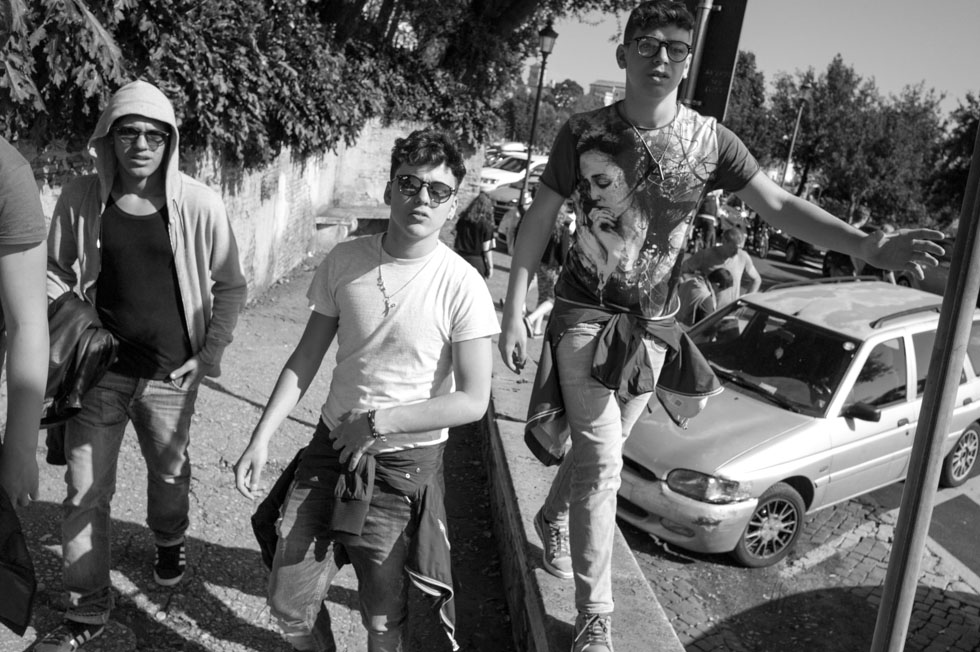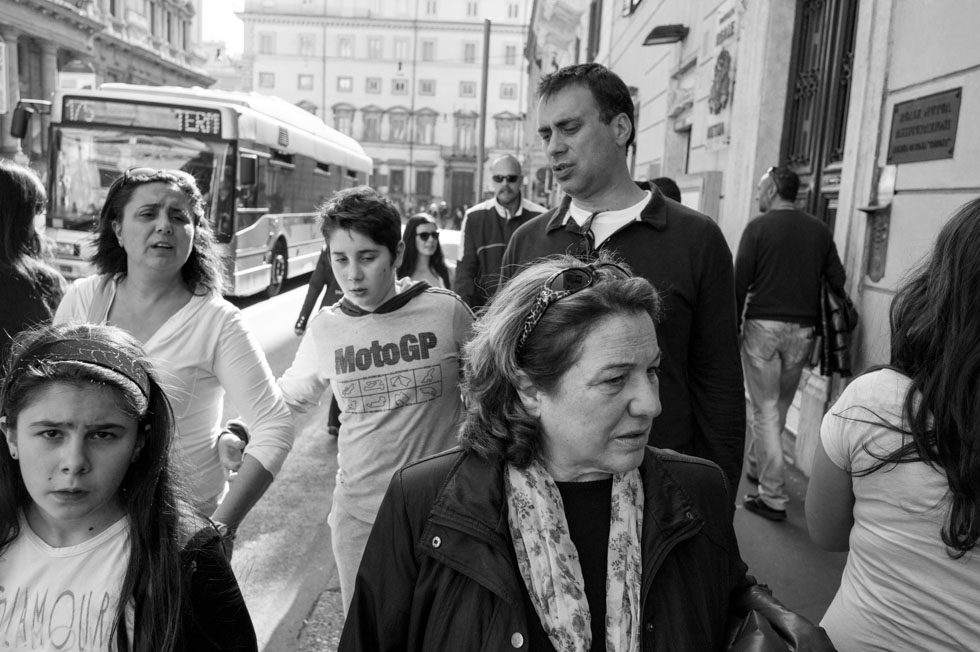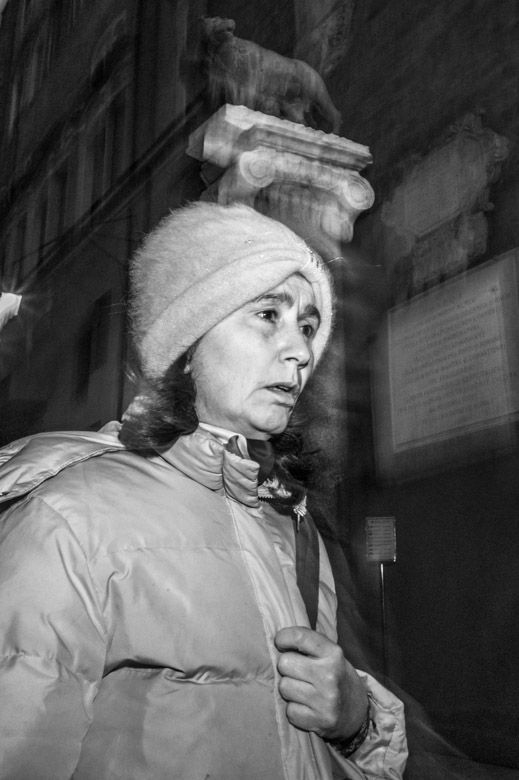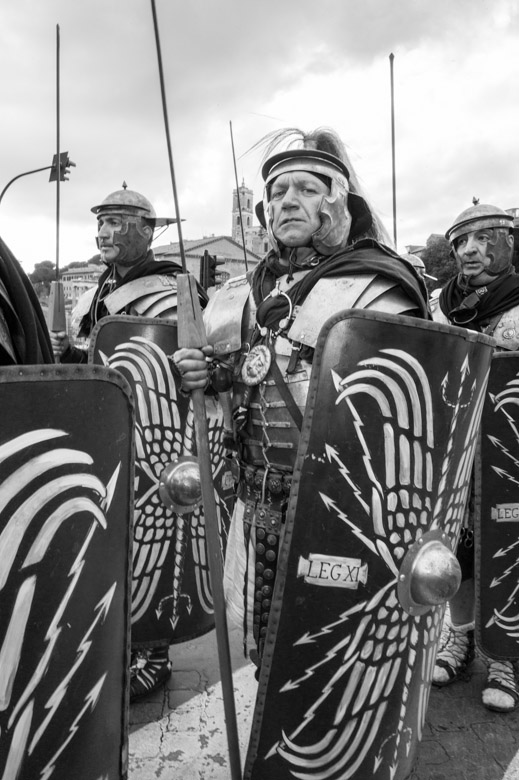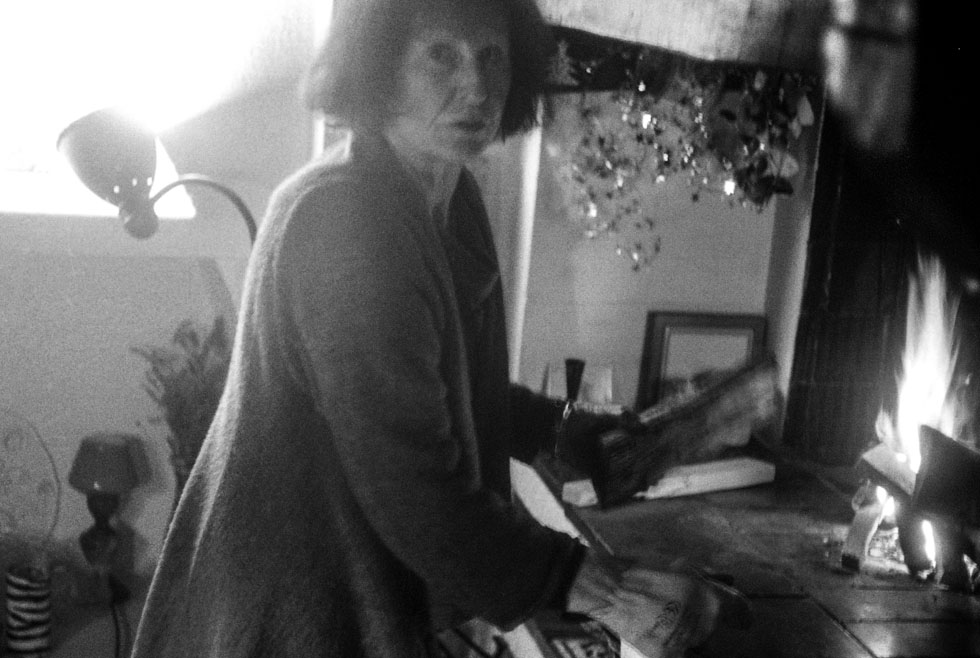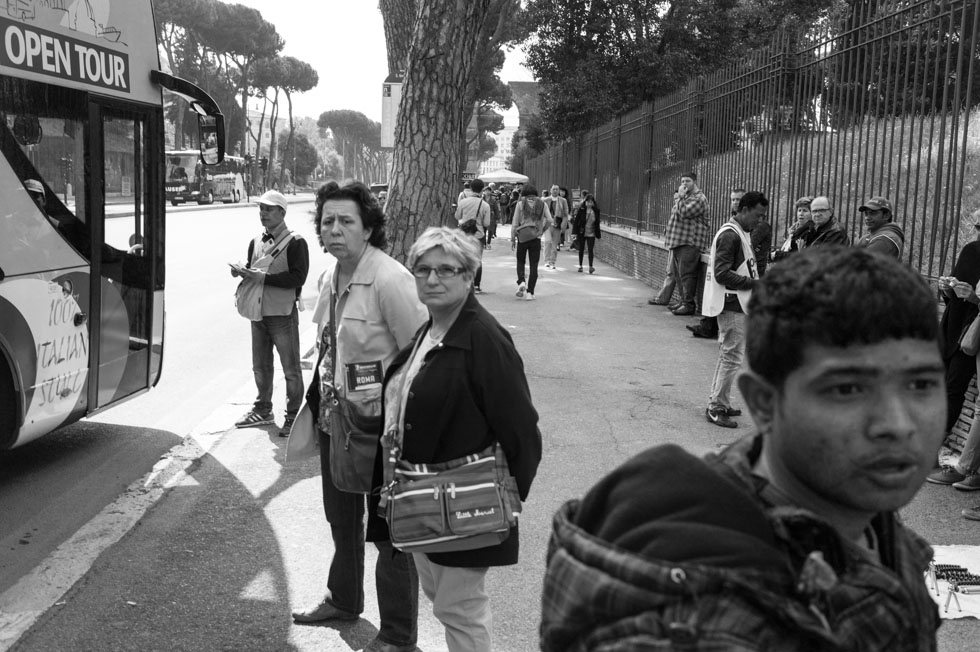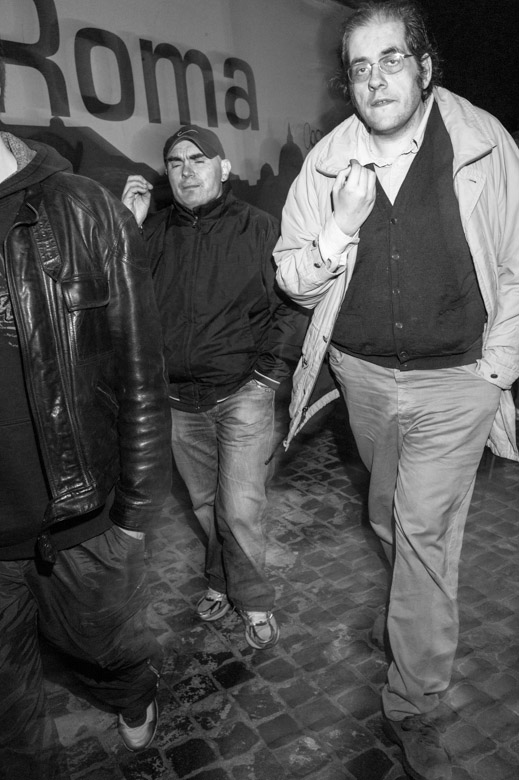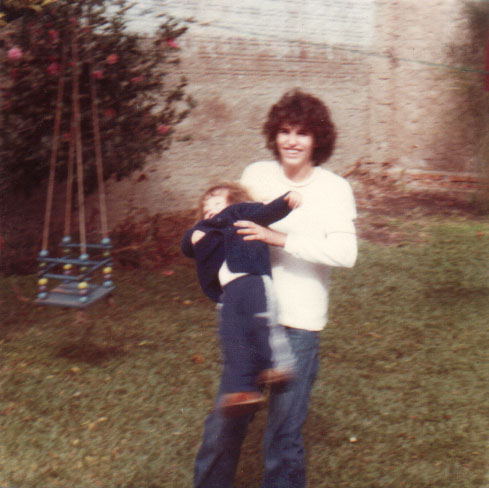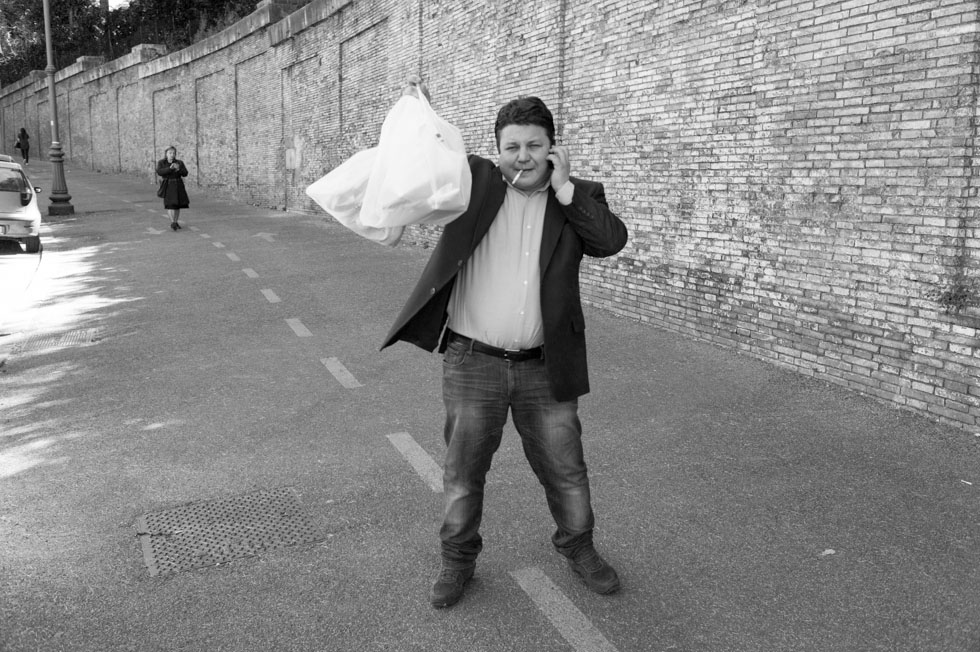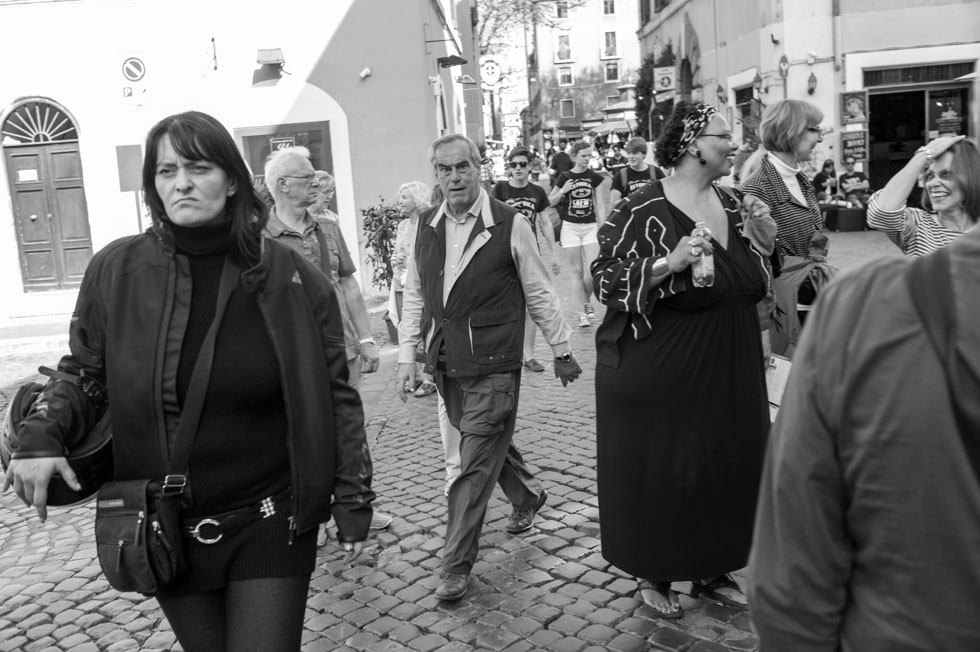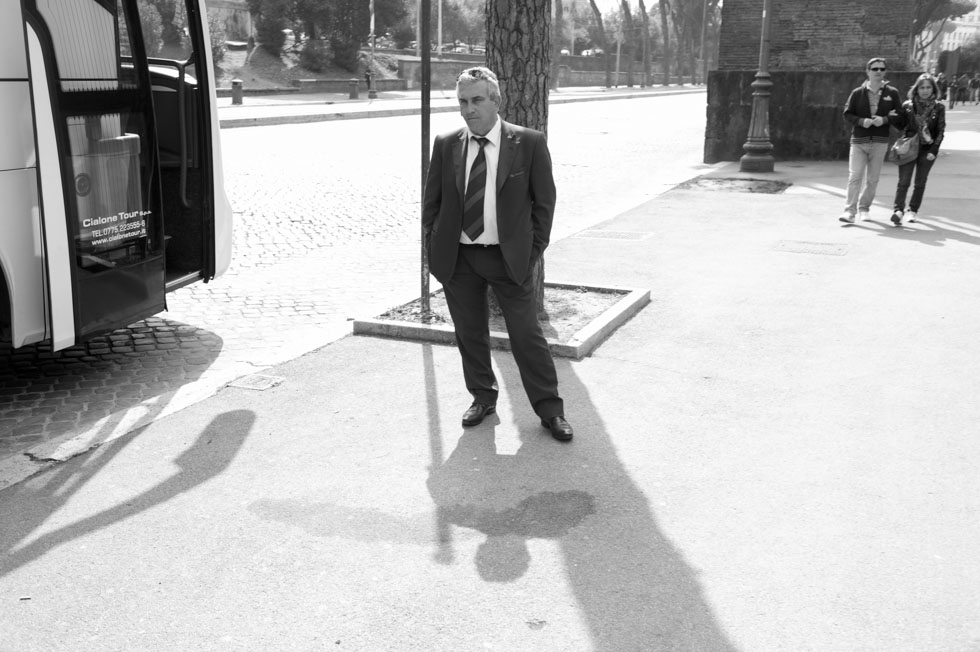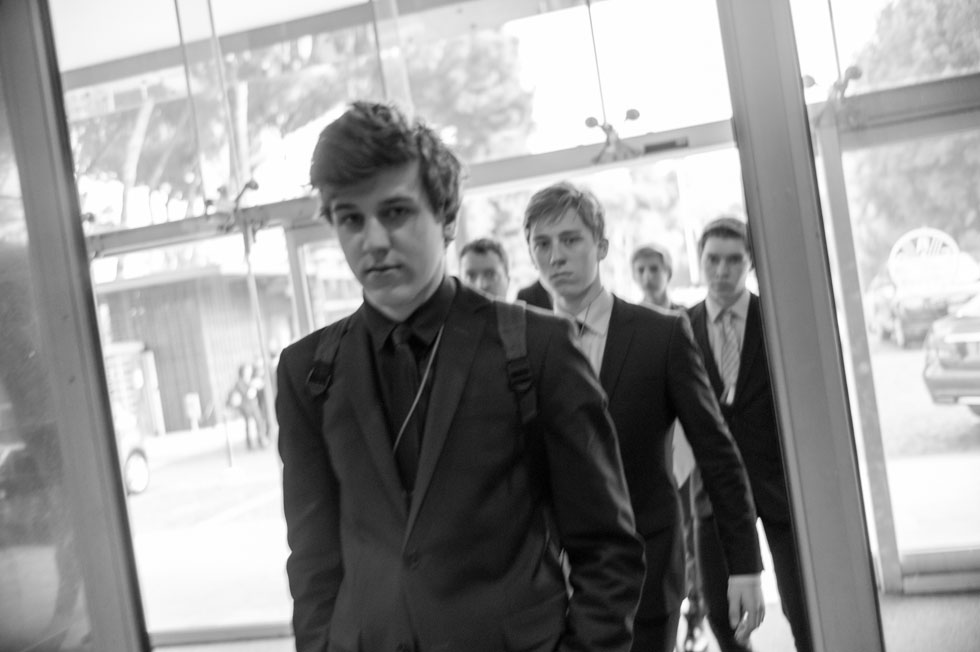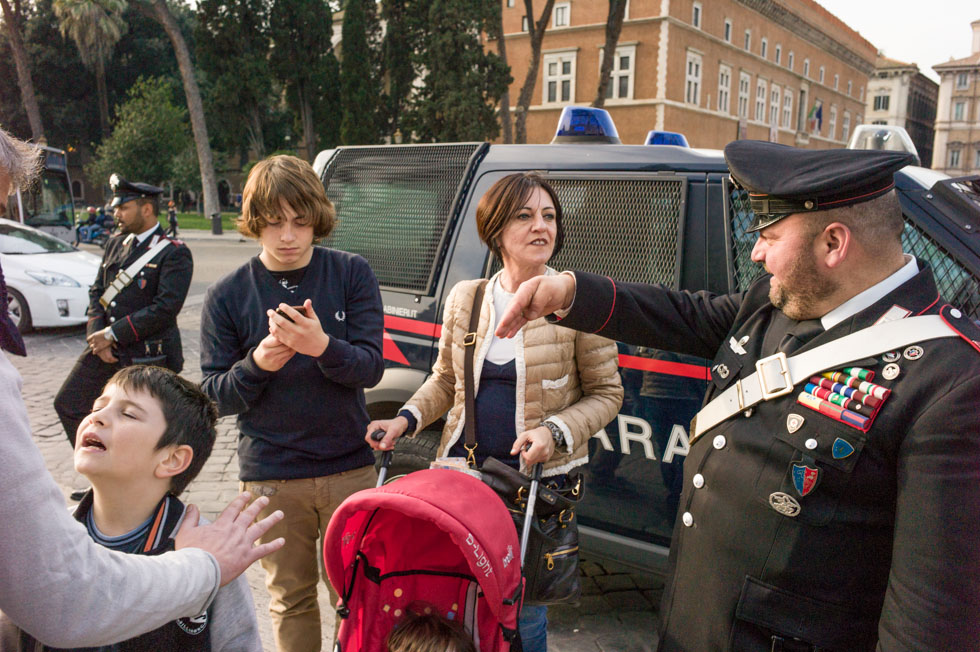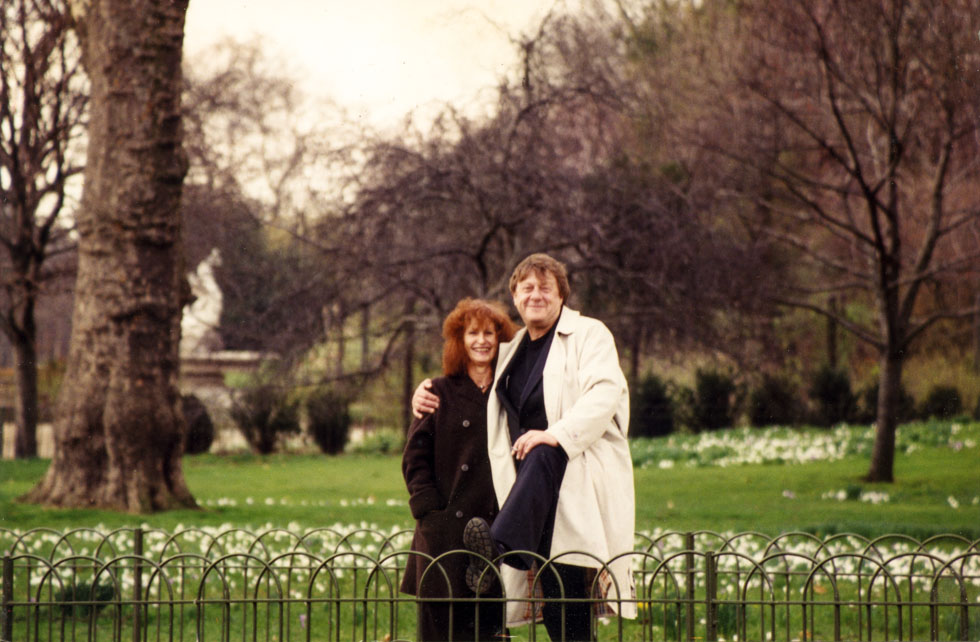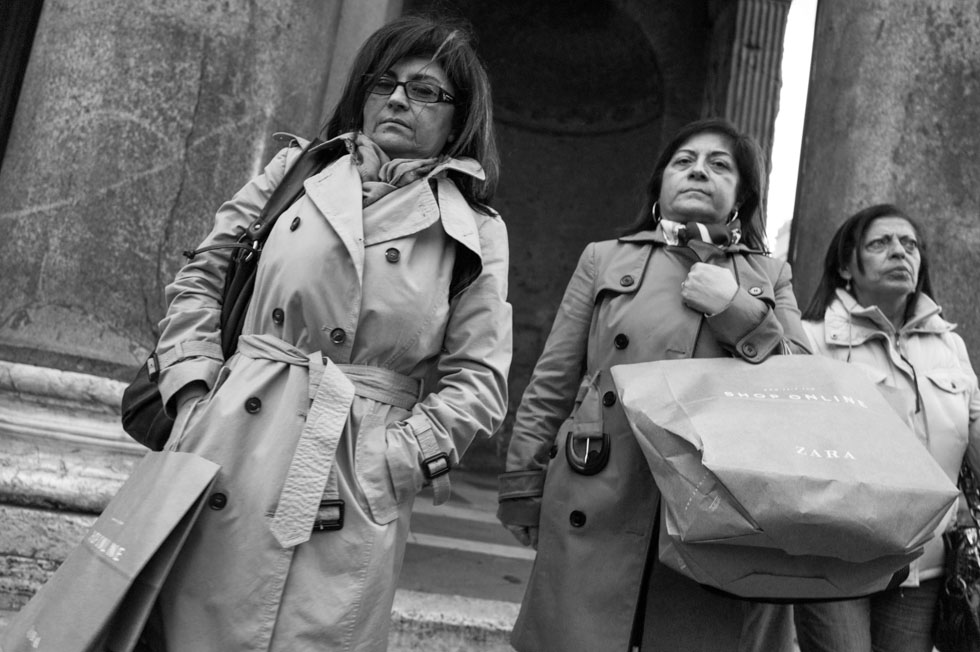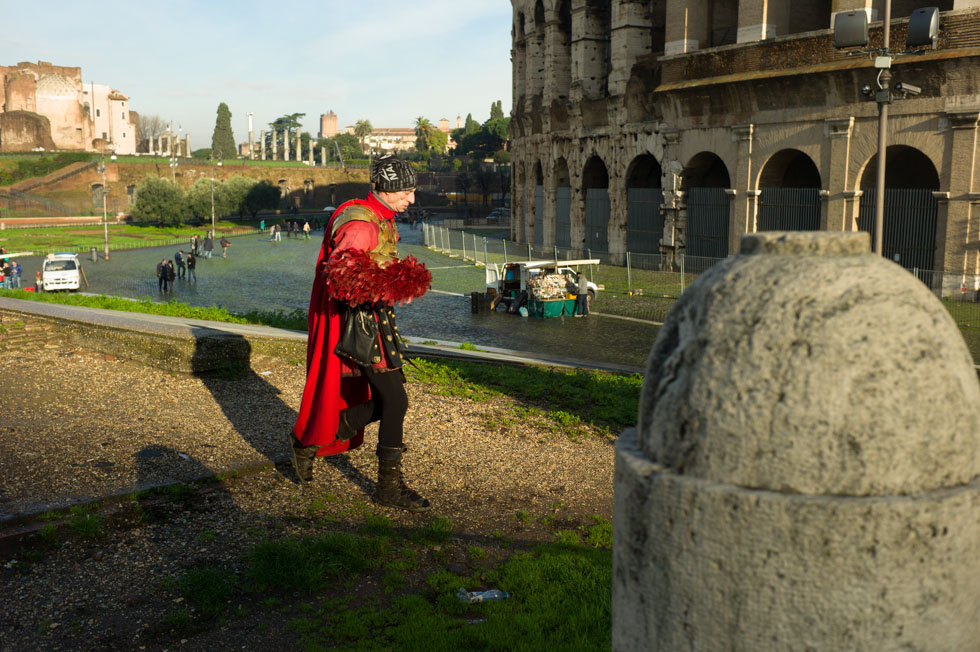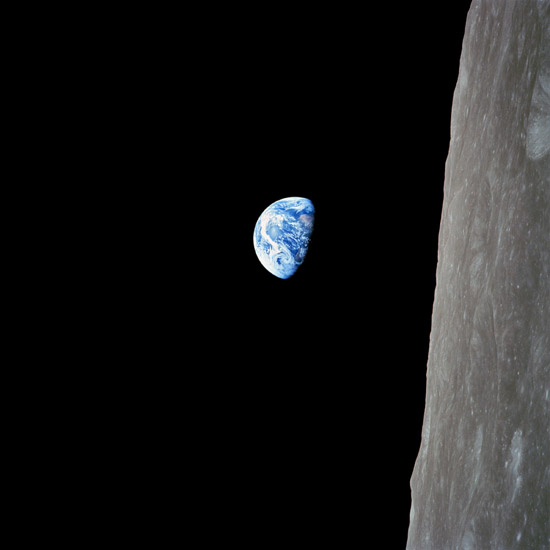
Simon Griffee
Department of graphic design, art direction, and photography.
April 2014
Daido Moriyama on ‘Home’
Daido Moriyama in ‘In Pictures’:
Japanese people often talk of home as a place where you are born, grow up and everyone is there. But I don’t have such a home. I’ve been moving a lot since I was a child. I am creating my own home by connecting pieces of images from my imagination and things I saw as a child. That’s how I feel about my work.
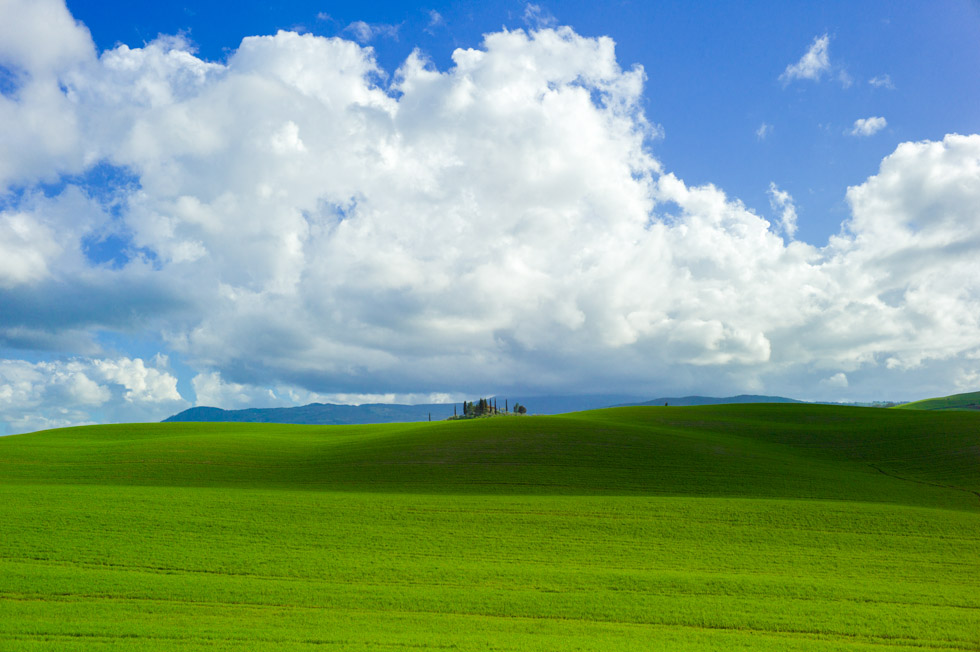
Tuscan Landscape, Tuscany, Italy, March 2013
A homage to the Windows XP wallpaper image, this photograph was taken on the side of a road near Montepulciano on March 2013.
Here’s a full-resolution version (5212×3468 pixels 8.5mb JPEG) that you can use personally, perhaps as your computer desktop’s wallpaper or a print for your or a good friend’s wall.
Baci e abbracci,
—Simon
Climate Change Communication
"Earthrise" in original orientation taken by Bill Anders on 24 December 1968.
A young person working in a United Nations organization recently told me it is not certain that human activities are changing the climate on Earth.
This is worrying.
I decided to go through the Intergovernmental Panel on Climate Change’s latest report and came across the WGII AR5 Volume-wide Frequently Asked Questions (FAQs).
Here are two of the answers (the numbers are references to chapters in the report which contain the sources for the answer):
FAQ 5: Can science identify thresholds beyond which climate change is dangerous?
[Chapters 1, 2, 4, 5, 6, 16,
17, 18, 19, 20, and 25; TS]
Human activities are changing the climate.
C
limate change
impacts are already widespread and consequential. But
while science can quantify climate change risks in a technical sense, based on the probability, magnitude, and nature
of the potential consequences of climate change, determining what is d
angerous is ultimately a judgment
that
depends on values and objectives
.
For example,
individuals
will
value the present
versus the
future
differently and
will
bring personal worldviews
on
the importance of
assets like biodiversity, culture, and aesthetics. Values also
influence judgments about the relative importance of global economic growth versus assuring the wellbeing of the
most vulnerable among us. Judgments about dangerousness can depend on the exten
t to which one’s livelihood,
community, and family are directly exposed and vulnerable to climate change. An individual or community
displaced by climate change might legitimately consider that specific impact dangerous, even though that single
impact migh
t not cross the global threshold of dangerousness.
Scientific assessment of risk can provide
an important
starting point
for
such
value judgments about
the danger of climate change
.
FAQ 6: Are we seeing impacts of recent climate change?
[Chapters 3, 4, 5,
6, 7, 11, 13, 18, 22, 23, 24, 25, 26, 27,
28, 29, and 30; SPM]
Yes, there is strong evidence of impacts of recent observed climate change on physical, biological, and human
systems. Many regions have experienced warming trends and more frequent high
-
temp
erature extremes. Rising
temperatures are associated with decreased snowpack
, and m
any ecosystems are experiencing climate
-
induced shifts
in the activity, range, or abundance of the species that inhabit them. Oceans are also displaying changes in physical
and chemical properties that, in turn, are affecting
coastal and marine ecosystems such as coral reefs, and other
oceanic organisms such as mollusks,
crustaceans, fishes, and zooplankton
. Crop production and fishery stocks are
sensitive to changes in tempe
rature.
C
limate change impacts are leading to shifts in
crop yields, decreasing yields
overall and sometimes increasing them in temperate and higher latitudes
,
and catch potential of fisheries
is
increasing in some regions but decreasing in others. Some indigenous communities are changing seasonal migration
and hunting patterns to adapt to changes in temperature.
Not so good.
The above is what I get when I copy and paste text from the PDF into a text editor.
This is part of the reason why when one searches for “IPCC report” in Google an article on a financial magazine with lots of disinformation1 is one of the first results, at least in the news category.
Lets try again, after writing the text in Markdown format:
FAQ 5: Can science identify thresholds beyond which climate change is dangerous? [Chapters 1, 2, 4, 5, 6, 16, 17, 18, 19, 20, and 25; TS]
Human activities are changing the climate. Climate change impacts are already widespread and consequential. But while science can quantify climate change risks in a technical sense, based on the probability, magnitude, and nature of the potential consequences of climate change, determining what is dangerous is ultimately a judgment that depends on values and objectives . For example, individuals will value the present versus the future differently and will bring personal worldviews on the importance of assets like biodiversity, culture, and aesthetics. Values also influence judgments about the relative importance of global economic growth versus assuring the wellbeing of the most vulnerable among us. Judgments about dangerousness can depend on the extent to which one’s livelihood, community, and family are directly exposed and vulnerable to climate change. An individual or community displaced by climate change might legitimately consider that specific impact dangerous, even though that single impact might not cross the global threshold of dangerousness. Scientific assessment of risk can provide an important starting point for such value judgments about the danger of climate change.
FAQ 6: Are we seeing impacts of recent climate change? [Chapters 3, 4, 5, 6, 7, 11, 13, 18, 22, 23, 24, 25, 26, 27, 28, 29, and 30; SPM]
Yes, there is strong evidence of impacts of recent observed climate change on physical, biological, and human systems. Many regions have experienced warming trends and more frequent high temperature extremes. Rising temperatures are associated with decreased snowpack, and many ecosystems are experiencing climate induced shifts in the activity, range, or abundance of the species that inhabit them. Oceans are also displaying changes in physical and chemical properties that, in turn, are affecting coastal and marine ecosystems such as coral reefs, and other oceanic organisms such as mollusks, crustaceans, fishes, and zooplankton. Crop production and fishery stocks are sensitive to changes in temperature. Climate change impacts are leading to shifts in crop yields, decreasing yields overall and sometimes increasing them in temperate and higher latitudes , and catch potential of fisheries is increasing in some regions but decreasing in others. Some indigenous communities are changing seasonal migration and hunting patterns to adapt to changes in temperature.
Much better.
I appreciate the difficulty and amount of work being done by the IPCC, but they should consider also making this information available in HTML and Markdown formats rather than buried in PDF documents, and they should put the latest FAQs directly on their homepage.
And why not call the latest FAQs ‘Frequently Asked Questions on Climate Change’ and publish them under an easy-to-remember URL such as
http://ipcc.ch/faqs?
We should not forget that a lack of clear communication can be fatal, as demonstrated by Richard Feynman:
For a successful technology, reality must take precedence over public relations, for Nature cannot be fooled.
In Heaven and Hell, the fourth episode of Cosmos, which includes a description of Venus’ atmosphere and of Earth’s greenhouse effect, Carl Sagan writes:
Our intelligence and our technology have given us the power to affect the climate. How will we use this power? Are we willing to tolerate ignorance and complacency in matters that affect the entire human family? Do we value short-term advantages above the welfare of the Earth? Or will we think on longer time scales, with concern for our children and our grandchildren, to understand and protect the complex life-support systems of our planet? The Earth is a tiny and fragile world. It needs to be cherished.
And in the final episode, Who Speaks for Earth?:
For we are the local embodiment of a Cosmos grown to self-awareness. We have begun to contemplate our origins: starstuff pondering the stars; organized assemblages of ten billion billion billion atoms considering the evolution of atoms; tracing the long journey by which, here at least, consciousness arose. Our loyalties are to the species and the planet. We speak for Earth. Our obligation to survive is owed not just to ourselves but also to that Cosmos, ancient and vast, from which we spring.
))
-
Noam Chomsky, writing about the dimming prospects for human survival: “The corporate sector is carrying out major propaganda campaigns to convince the public that climate change, if happening at all, does not result from human activity. These efforts are aimed at overcoming the excessive rationality of the public, which continues to be concerned about the threats that scientists overwhelmingly regard as near-certain and ominous. ¶ To put it bluntly, in the moral calculus of today’s capitalism, a bigger bonus tomorrow outweighs the fate of one’s grandchildren. ¶ What are the prospects for survival then? They are not bright. But the achievements of those who have struggled for centuries for greater freedom and justice leave a legacy that can be taken up and carried forward - and must be, and soon, if hopes for decent survival are to be sustained. And nothing can tell us more eloquently what kind of creatures we are." ↩︎

